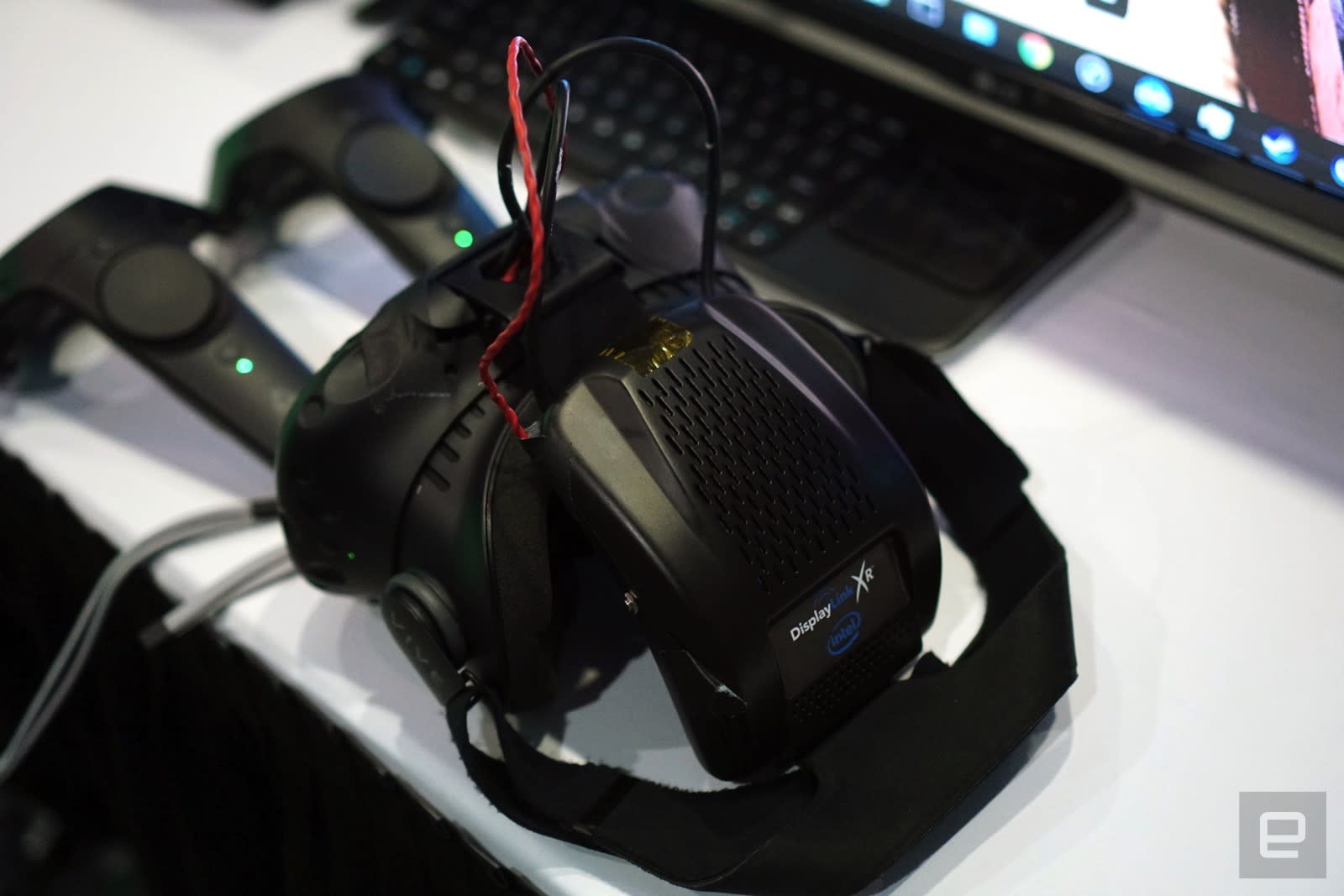Intel’s wireless HTC Vive add-on is where VR is headed in 21st century.
Intel’s wireless HTC Vive add-on is where VR is headed in 21st century.
By; Bashorun Bimbola[Science Contributor], 14/06/2017.
It offers the best wireless VR connection we’ve seen yet
But there's a new contender: Intel is showing off its own wireless VR add-on, DisplayLink XR, at E3. It's based on WiGig technology, which the company claims it delivers less than 7ms of latency. And since WiGig relies on the 802.11ad standard, it can reach gigabit speeds over the uncrowded 60GHz spectrum. Intel first revealed that it was working on the DisplayLink XR at CES, but we didn't hear much about it until Computex, when it announced a partnership with HTC to build and market it. After testing the accessory out at CES, I'm not surprised why HTC jumped at the chance to partner with Intel.
Just like the TPCast headset, the DisplayLink XR sits on top of the Vive's headstrap. The prototype is a bit large and cumbersome, and it also has delicate wires sticking out and into the front of the Vive (covered with some classy black tape). It didn't really inspire much confidence when I first saw it, but my attitude changed when I slipped on the Vive and started playing Space Pirate Trainer.
Follow Greenwayenterprise on Twitter @Tweet_Greenway.
Follow Greenwayenterprise on Instagram@Greenway_enterprise
Like our Facebook Page @Greenwayenterprise
It's a game that starts out slow, but quickly gets fast-paced as you're shooting alien ships and dodging their projectiles. But no matter how crazy the game got, Intel's wireless add-on kept up. I never noticed any slowdowns or stuttering -- the game played just as well as it does on my tethered Vive setup at home. In comparison, while I had a solid experience with TPCast's wireless accessory, there were moments where the performance got a bit jerky. Intel's device added a bit of weight to the headset, and I often had to be careful not to dislodge it, but those issues could be resolved as the hardware gets finalized.
You may also like:
We still don't know when Intel's DisplayLink XR will be available, or how much it will cost. But, based on what I've seen so far, the company is at least on track to deliver something genuinely useful. The move to wireless will be a huge boon for desktop VR, though it'll have to contend with entirely self-contained virtual reality headsets, like Oculus' prototype "Santa Cruz" device, as well as increasingly capable mobile VR offerings.
Source; Engadget 2017.
Thank you for your patronage



Comments
Post a Comment